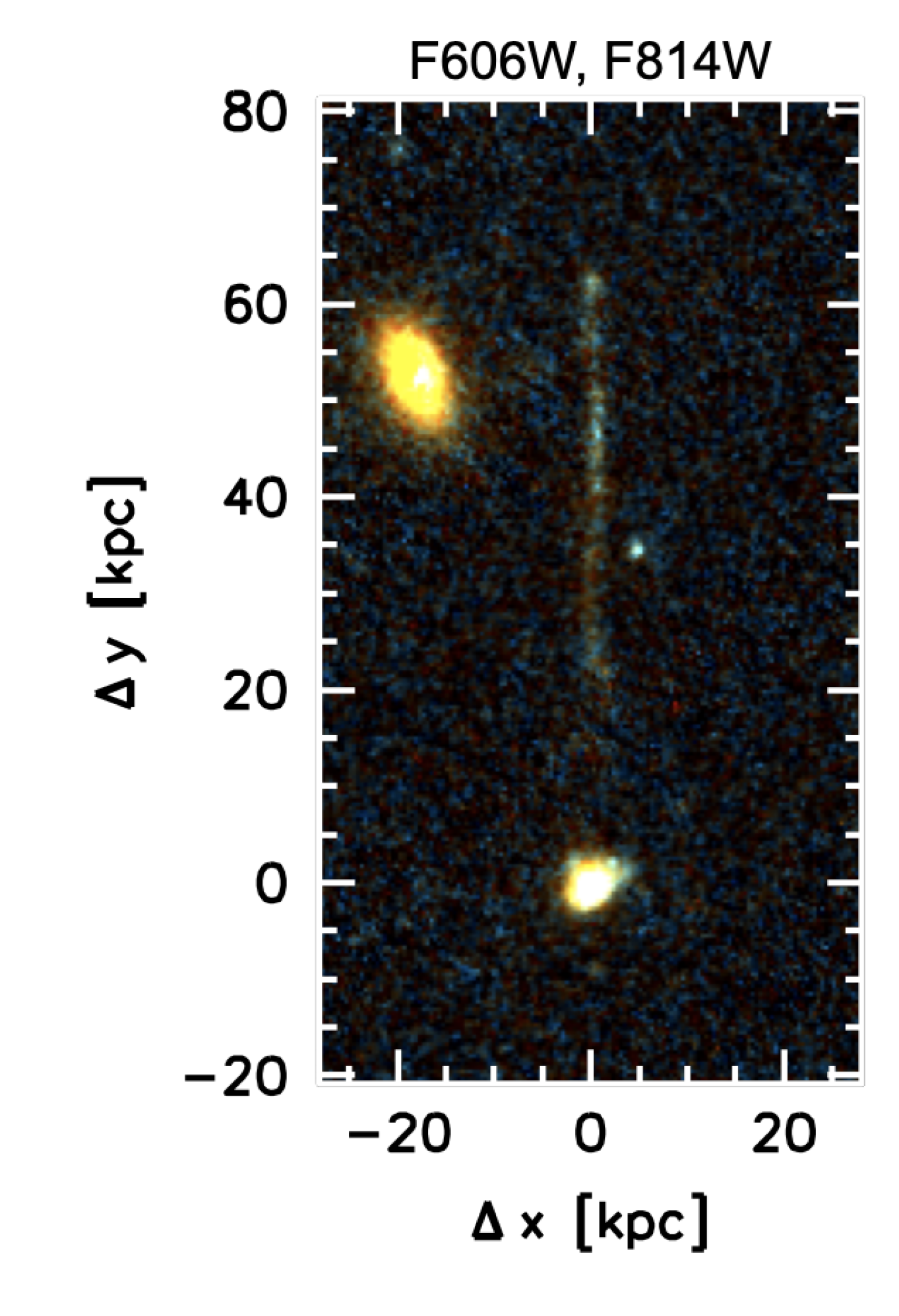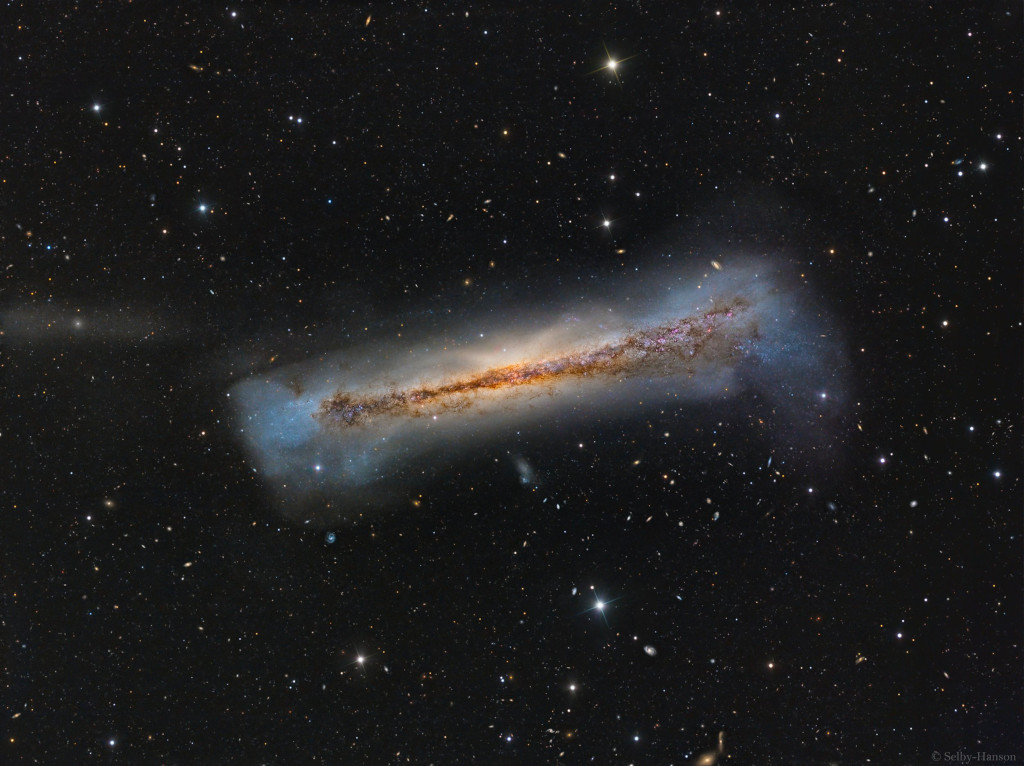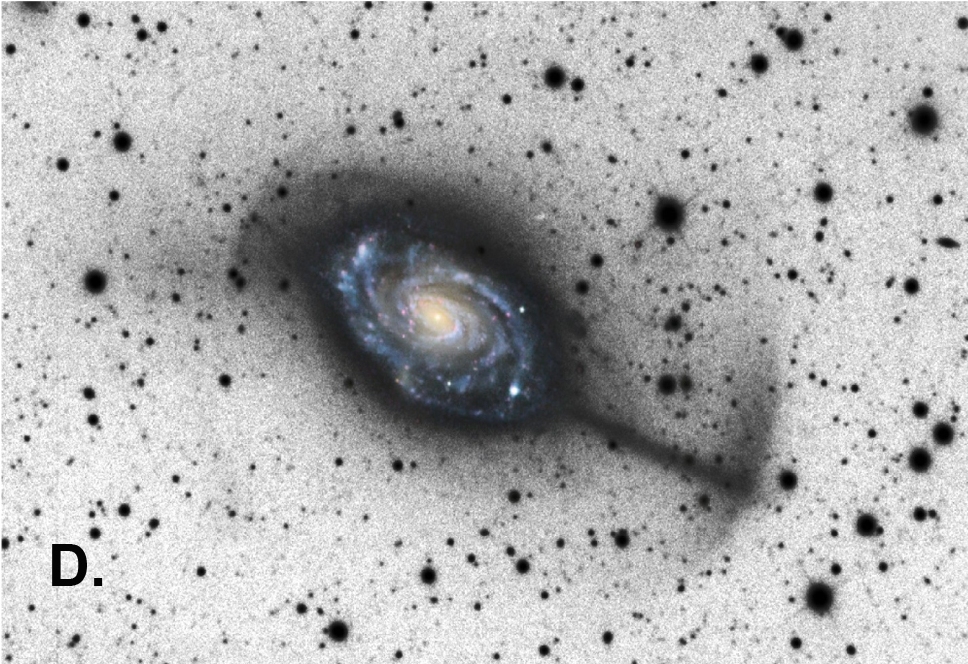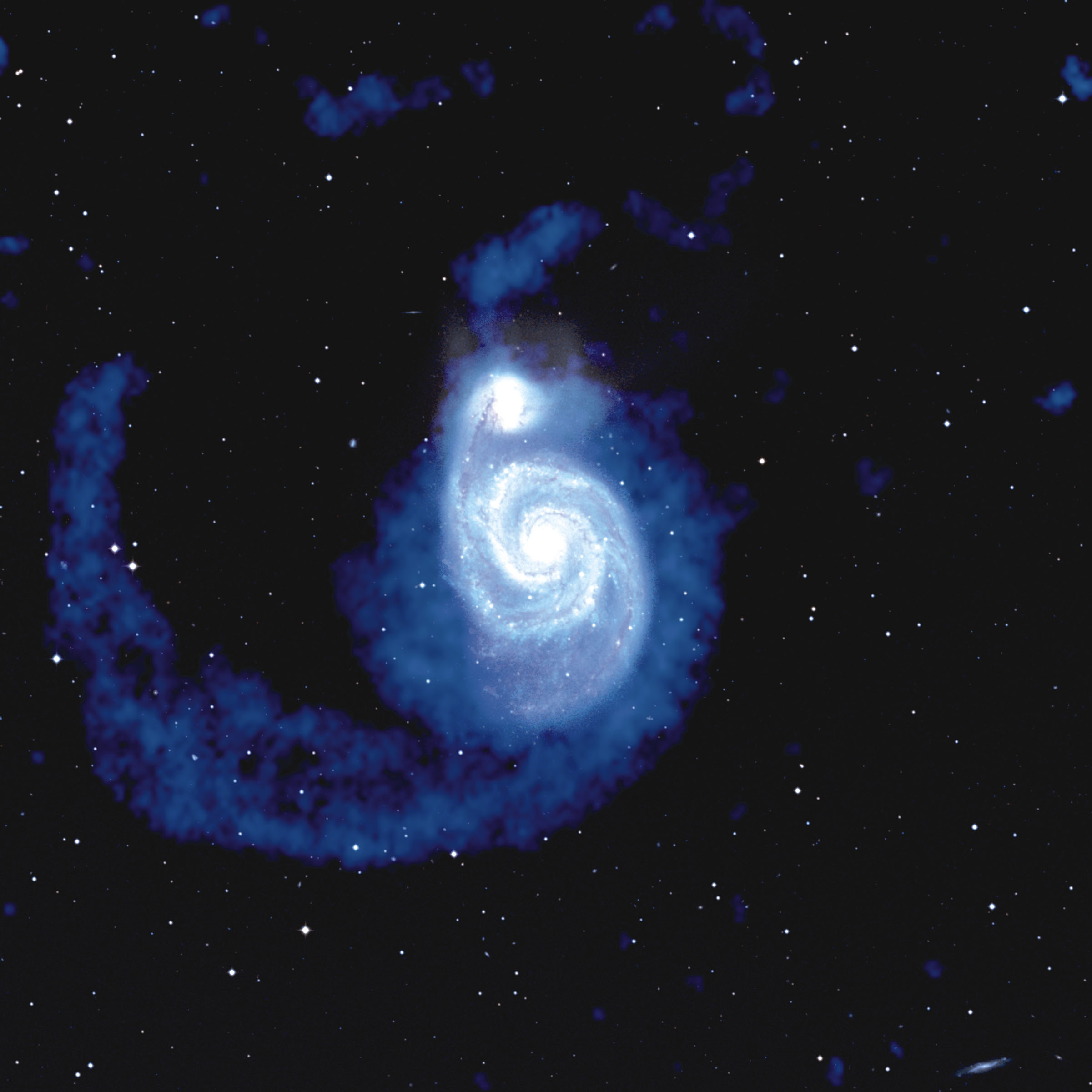Ann wrote: ↑Fri Apr 14, 2023 2:43 pm
De58te wrote: ↑Fri Apr 14, 2023 12:48 pm
I'm trying to wrap my head around of how the 300.000 ly tidal tail was formed. The description says that likely gravitational forces from its two neighbors in the Leo Triplet created it. Yet looking athe the Leo Triplet link we see that NGC 3628 is perpendicular to the two others and they are below with even M65 below and to the right. In school I learned that gravity only pulls, it never pushes. But here it looks like the gravity actually pushed the tidal tail away in the opposite direction? Could it be that NGC 3628 is actually spinning and many millennia ago when the tail formed it was actually end on and much closer to the other two galaxies?
A 300,000 light-year-long tidal tail is certainly impressive. I can say absolutely nothing on exactly how it was formed.
Ann
One known way for a galaxy to grow a straight or slightly curved bluish tail (which is a starbirth lane through intergalactic media) is to merge with a dwarf galaxy, have your central billion suns massive black hole merge with their 100 million suns massive BH and, if you are lucky and the spins of the two BHs are co-directional, voila — the two pinch the space fabric between them, firing a gravitation wave packet mostly in one direction; the recoil gives the merged BH a velocity of 1500 km/s and kicks it out of you, growing a tail that would stay bright for 30 million years.
The sad thing is that if you want to grow another tail you must first grow another billion suns massive BH, and that would take a billion years; then you can start looking for a dwarf galaxy with matching BH's spin, but your old tail is long since fainted by then.
A rather straight bluish tail with a tiny bright tip in the wake of a kicked-out BH looks like
this

(The filters used are red to account for a large red shift)
I think if a runaway supermassive BH is somewhat slow, its path may curve in the gravity well of the galaxy's dark matter halo and it can slow down. A slow BH in a distant thin area of the intergalactic media would result in a faint tail's tip.
Anyway, the start of the starbirth lane should be straight and should begin right at the core of the galaxy. That test is passed by this APOD OK.
It may also be faint and sparse compared to the rest of the tail because it's 10 million years older.
That is not so for this APOD. Here I am confused.
 Portrait of NGC 3628
Portrait of NGC 3628








